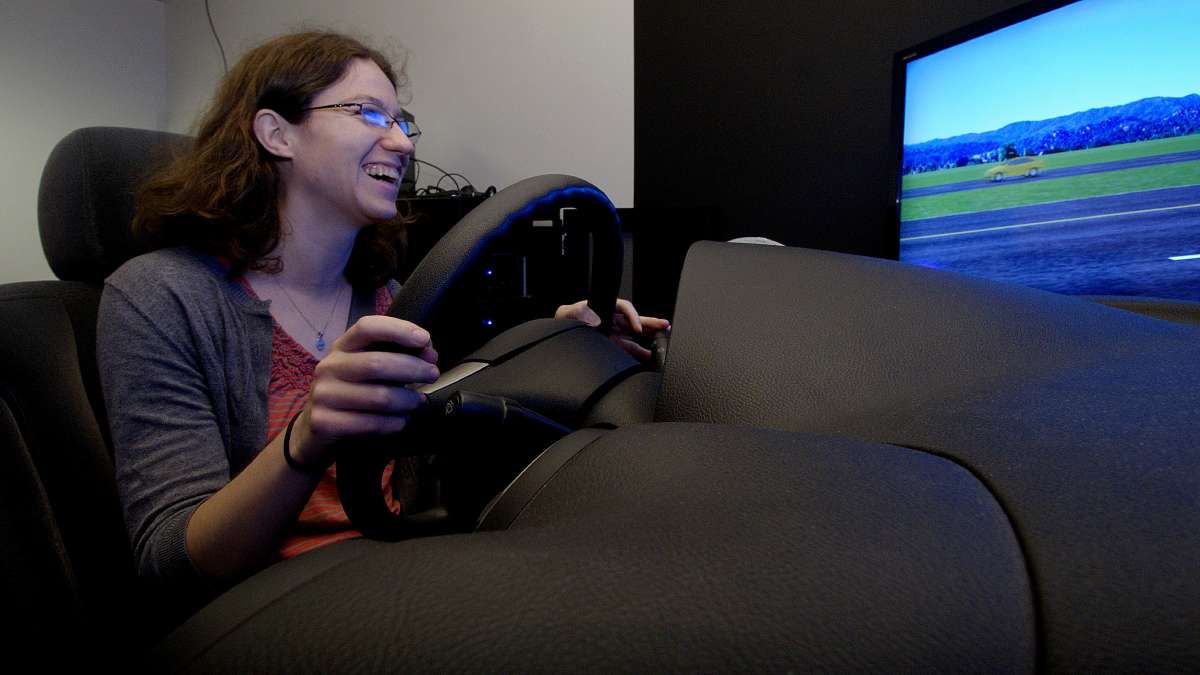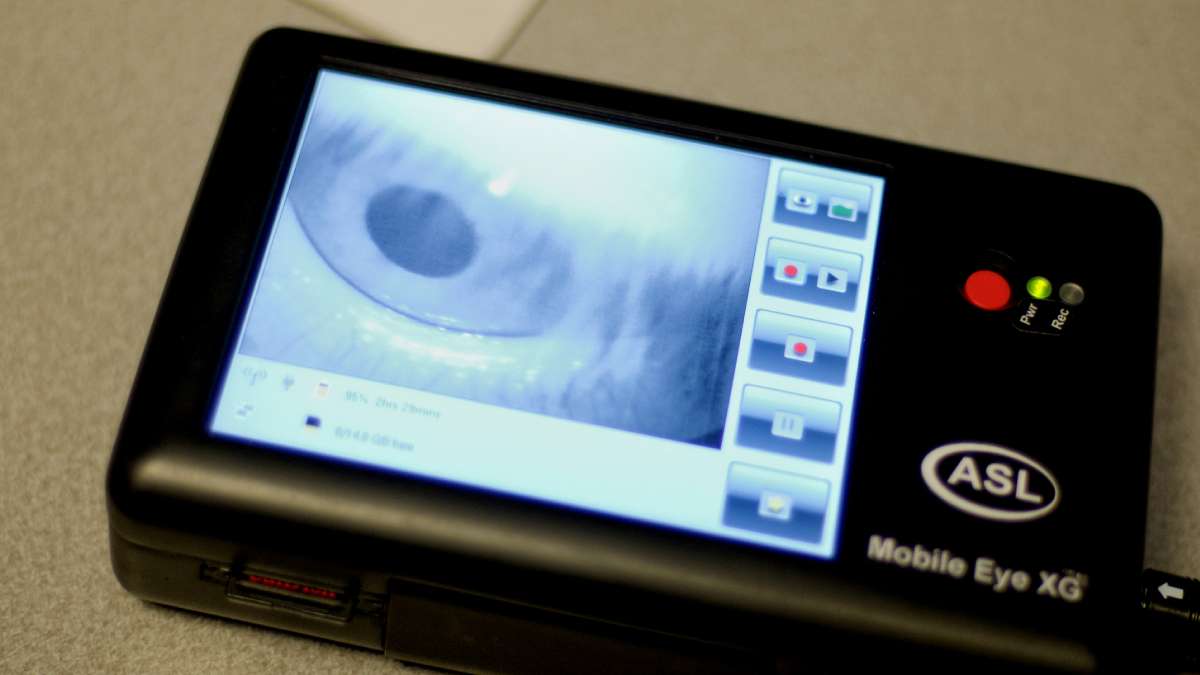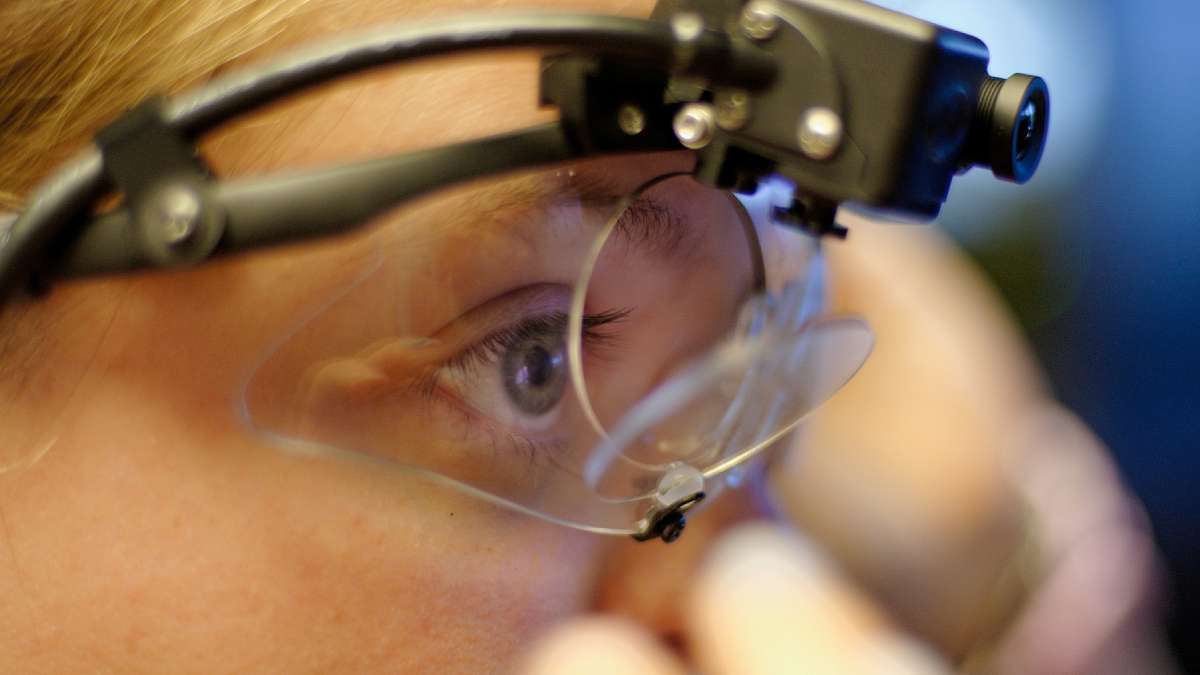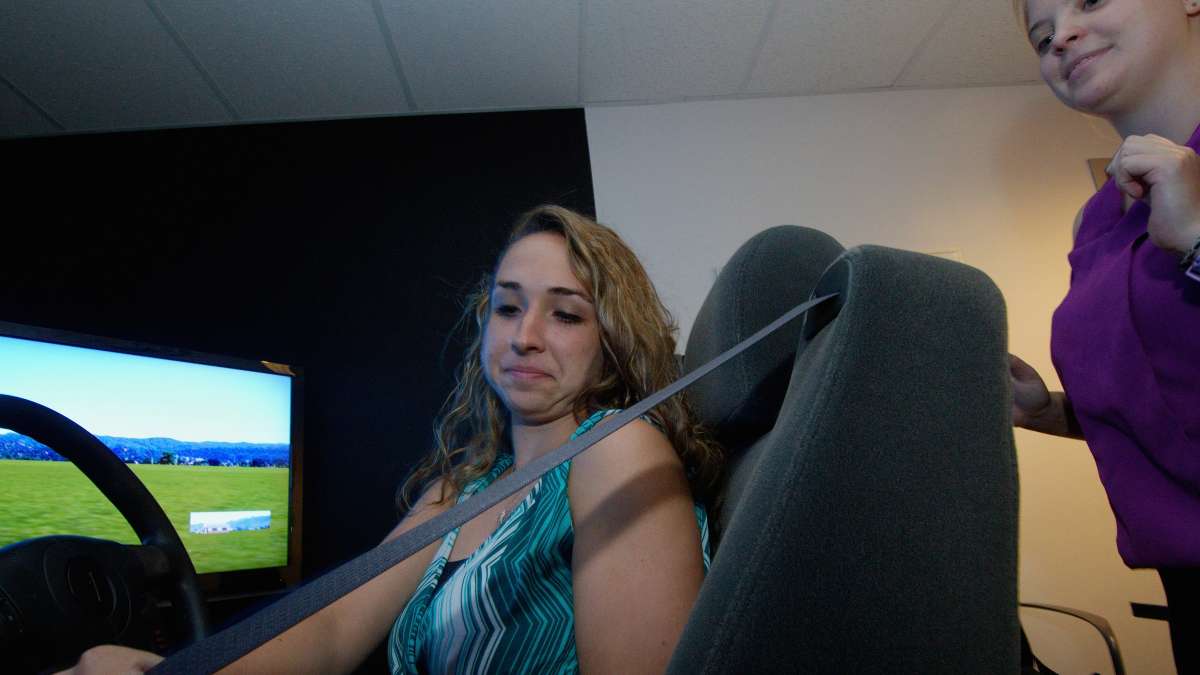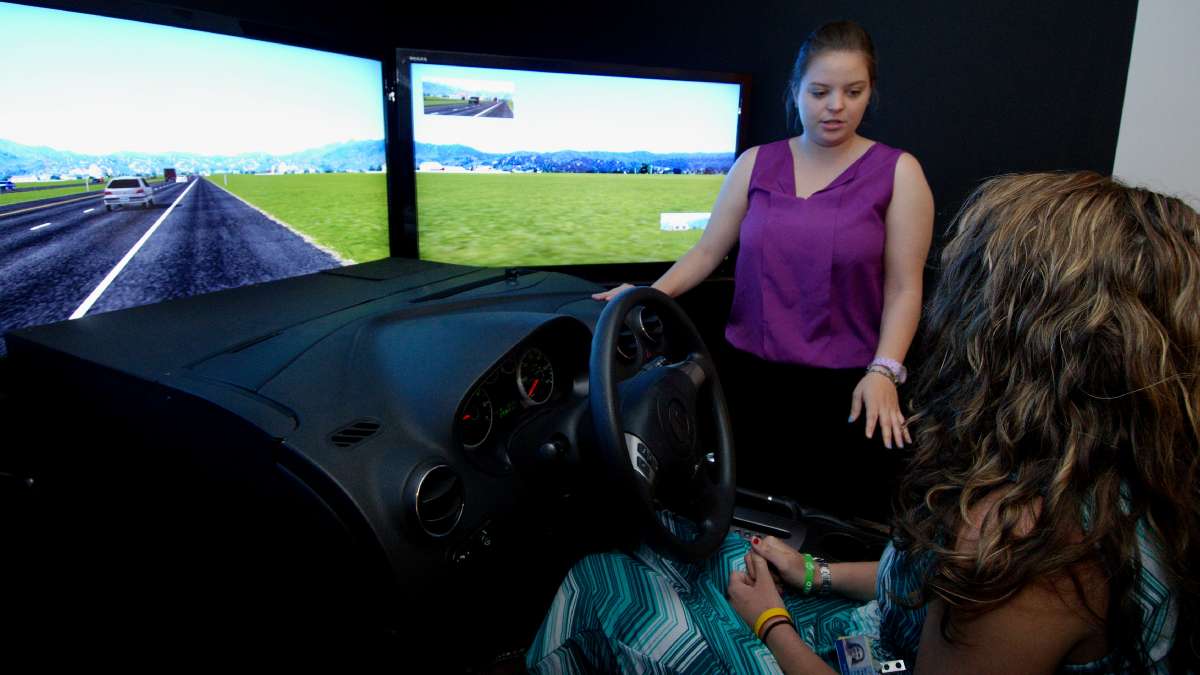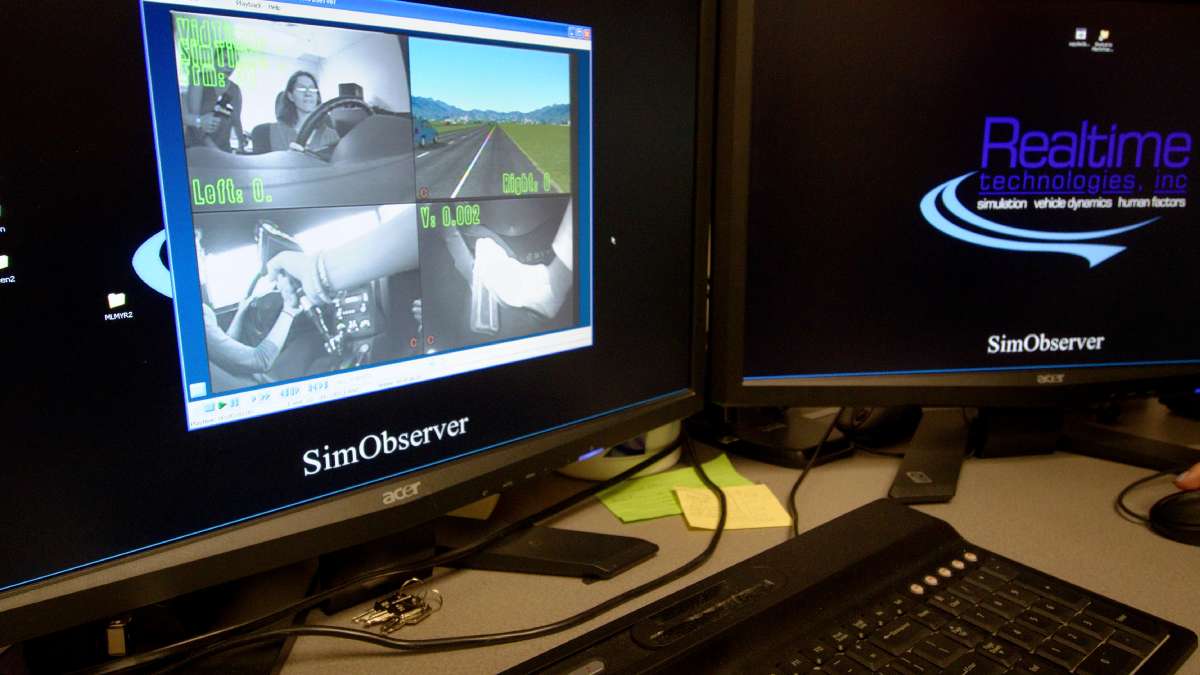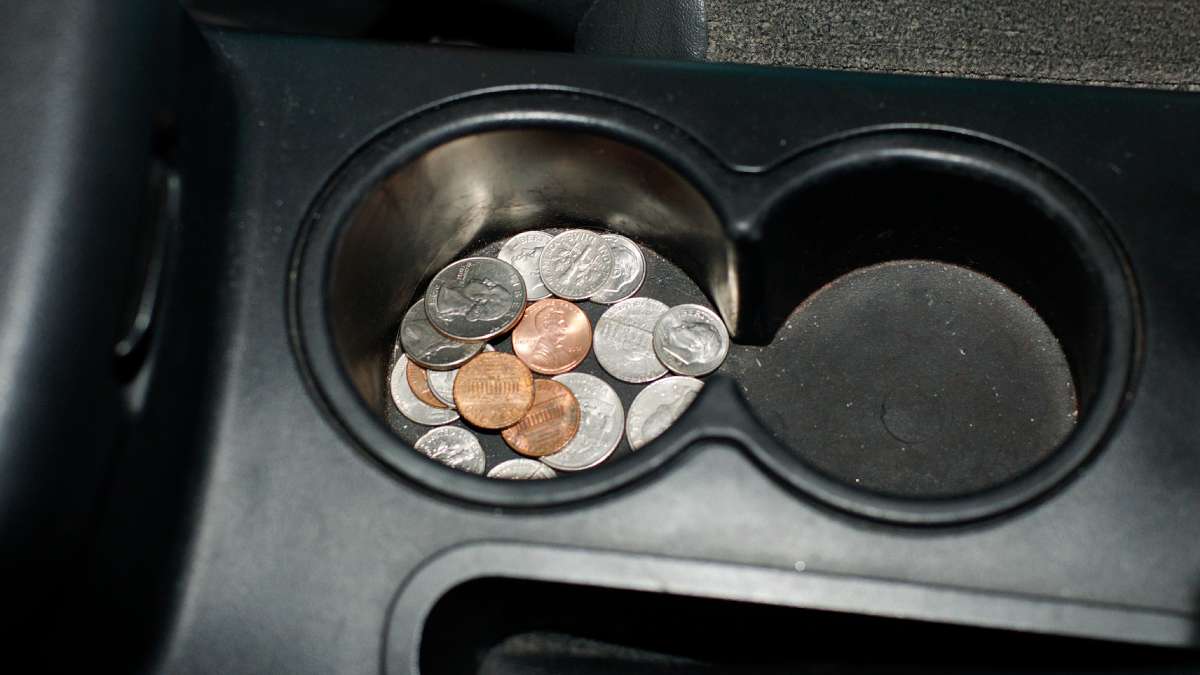For teens, mastering driving safely is a simulator ride away [photos]
ListenAfter teenagers get their driver’s license, often another rite of passage soon follows – their first car crash. In many cases, it can prove deadly.
Motor vehicle accidents are the leading cause of death for teens.
One pediatrician at the Children’s Hospital of Philadelphia says there’s a better way to ensure new drivers are ready to hit the road.
Following the dataAbout 20 years ago, Flaura Winston found her calling.
“I started looking at what was the condition that was undertreated, under-recognized with children,” she said, “and it was actually injury.”
Winston had also trained as an engineer, and the data were undeniable. Car crashes pose the biggest threat by far.
“One in five teens have a crash in the first year that they’re licensed,” she said. “If there were any other disease like that, we would all be doing something about it.”
Winston dedicated her career to turning around those grim statistics, and now is the scientific director of the Center for Injury Research and Prevention at CHOP. Her current tool of choice is a commercial driving simulator.
Virtual zoom zoomThe machine looks a bit like an elaborate arcade game. Three flat-screen monitors offer an expansive 160-degree view. Like any car, the console has air vents and a radio. It lacks the visual sophistication of the Need For Speed or Gran Turismo video games, but it does feel very real.
Skye Miller, a Drexel student who’s helping run the simulations, said a team of programmers can create almost any imaginable situation to test young drivers.
“There are ones that have deer coming across the road and bicyclists, or crazy kids running in front of cars,” she said.
That’s a key advantage for the simulator. On a typical practice drive with parents, teens might encounter tricky scenarios only occasionally. But in the safety of an 11th floor office building, the simulator can throws dozen of hazards at new drivers.
“We intentionally make things happen 22 times in a span of a half an hour,” said Winston.
Video cameras, sensors, and other equipment monitor how young drivers handle each challenge. Eye trackers, for instance, follow where they’re looking to gauge whether they’re properly scanning the road ahead.
“We’re measuring where your feet are; we’re measuring your hands on the steering wheel,” said Winston. “We’re measuring every aspect of how much you sped up, slowed down, your brake pressure, how much you veered into lanes.”
Ten minutes after a drive, teens get a report of how they did.
“We give them a printout — much like after an EKG, you get a printout of how your heart was,” explained Winston. “In this situation we say, OK, here are the scenarios where you had problems; these are the specific skills that you did wrong. So it’s actually diagnosing driving.”
Often, kids go too fast or follow the car ahead too closely. Intersections can be a problem, as can curves.
Not yet readyIn a recent study, Winston and her team had 21 teens and 17 adults run through the simulator. Even though the kids all had licenses, 43 percent crashed at least once, compared with 29 percent of adults.
“Mostly, the reason why teens crash is because they’re inexperienced and they don’t have the skills,” said Winston. “Their parents let them drive before they were ready to.”
The simulator assessment could help with that — and indicate when new drivers are ready to hit the road, she said.
But clearly, lots of adults make mistakes, and the simulator can aid them, too.
A recent participant, for example, had a revelation after taking a virtual spin.
“After going through it,” Winston recalled, “he was like, ‘Wow, I went through exactly the scenario I had a crash in a month ago. And now I know why.'”
Compared with teens, adult crashes more frequently involve alcohol. Distractions, such as texting, are bad for both, but can be worse for adolescents.
“So with adults, they may be doing some of those other things,” said Winston. “But they’ve got really good skills and they have a lot of experience. So they have the muscle memory to know what to do in a certain situation. Teens just don’t have that.”
Building up those basic skills, she said, is the key to crash prevention.
Winston’s ultimate dream is to open driving clinics, so that anyone can get the kind of feedback her research subjects get. Within a few years, she said, it might be a reality.
WHYY is your source for fact-based, in-depth journalism and information. As a nonprofit organization, we rely on financial support from readers like you. Please give today.


